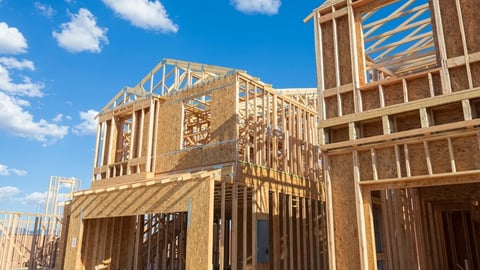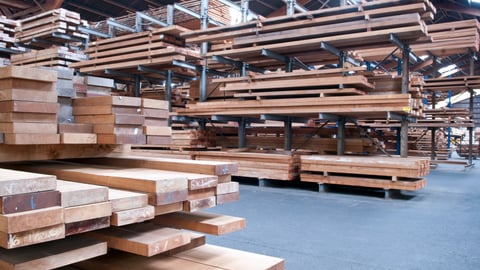Commerce Secretary taking lumber pricing crisis “seriously”
The National Association of Home Builders (NAHB) reported that Commerce Secretary Gina Raimondo acknowledged the depth of the lumber price crisis and its effects on the residential construction industry, home buyers, and renters.
Raimondo’s provided her thoughts on the subject during a meeting with members of the NAHB’s senior officers last week.
“The residential construction industry is facing serious challenges because of supply chain constraints and the impact on home building, especially with respect to affordable housing,” Raimondo said. “Today was a productive, positive conversation to begin to address these challenges.”
The Commerce Secretary also said that “we take these issues seriously, and my staff and I are committed to continuing to work with all stakeholders, including reviewing relevant data and conducting analysis to identify targeted actions the government or industry can take to address supply chain constraints.”
Raimondo and NAHB CEO Jerry Howard discussed working together on convening a summit that would include representatives from the U.S. government, the lumber supply chain and the home building industry.
“Commerce Secretary Raimondo understands that high lumber costs are adding tens of thousands of dollars to the price of a new home,” said NAHB Chairman Chuck Fowke. “She heard our stories and acknowledged that she is concerned – and that President Biden is concerned – about the effect of the lumber price problem on the broader economy."
“There is a disconnect between lumber supply and housing demand,” said NAHB First Vice Chairman Jerry Konter. “U.S. sawmill output increased 3.3% in 2020. But over the same period, single-family construction increased 12% to almost 1 million housing starts, and the remodeling market expanded 7%.”
Konter said there is a mismatch between domestic production and rising demand for building materials is at the root of the unsustainable increases in lumber prices.
Current prices according to the Random Lengths Framing Lumber Composite Index – the industry benchmark – have more than quadrupled since April 2020 to more than $1,500 per thousand board feet.
Lumber prices alone are adding nearly $36,000 to the price of a new home, pricing millions of middle-class households out of the market at a level they previously could afford, NAHB analysis shows.
Looking at domestic timber, NAHB Second Vice Chair Alicia Huey pointed out the decline in the domestic harvest, noting that as recently as the mid-1990s, roughly 10 billion board feet of lumber was harvested from the nation’s forests each year.
Over the last 10 years, the harvest has fallen below 3 billion board feet most years. Huey asked the secretary to advocate for better, more active forest management goals from U.S. national forests to help ease the current shortage.
NAHB Third Vice Chairman Carl Harris encouraged the secretary to push for a lasting softwood lumber agreement with Canada.
“We need trade policy that actually serves the interests of the American people and increases housing opportunity for first-generation home buyers,” he said.
The effect of high lumber prices on low- and moderate-income families is a top concern of NAHB and the Biden administration, noted NAHB Immediate Past Chairman Greg Ugalde.
“My company works with many first-time, first-generation home buyers,” said Ugalde. “After all these lumber costs get added to the price of a home, those first-time home buyers are often the first to be eliminated from the market.”
Ugalde also acknowledged Raimondo’s long-standing commitment to the housing industry.
“We met with you when I was NAHB chairman and you were the governor of Rhode Island, and we saw that you were a person of action when it came to housing affordability,” Ugalde said. “We need your help again to protect first-generation home buyers.”
Raimondo noted that NAHB proposed tangible ideas for moving forward on the lumber problem, including better forest management, increased production from the nation’s sawmills, and working toward a more lasting agreement with Canada.
“I want to thank the NAHB and its leaders for constructive engagement on this issue and working with us to find a path forward,” Raimondo said.
NAHB officials previously met with Raimondo last month, followed by the secretary promising to address lumber issues.
Despite ongoing discussions and government officials acknowledging the lumber pricing crisis, the Commerce Department is doubling lumber tariffs on Canadian lumber shipments into the United States from 9% to 18.32%.





